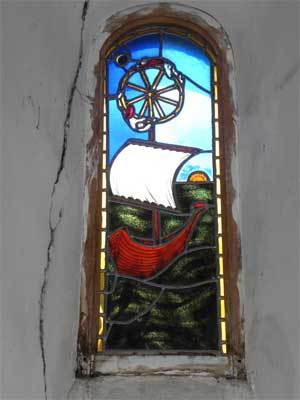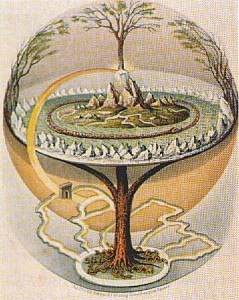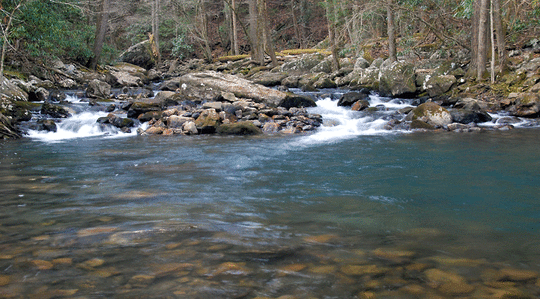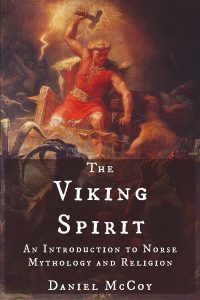Lawrence R. Spencer's Blog, page 427
October 28, 2016
CROSSROADS OF FOUR WINDS
I don’t often pay much attention to UFO stuff, but a friend of mine sent me the following article about Mount Bugarach, which located in the Pyrenees Mountains in France that has been related to legends of Mu, Lemuria, Atlantis and UFOs for centuries.
The mountain, 1230m high, is known as “The Crossroads of the Four Winds” and also as the Mountain-with-its-feet-in-the-air, because it once blew up and the top part of it landed upside-down-down. There does seem to be more of it above than below. It dominates the south of Aude; you can see it from almost everywhere. It is an orientation point – they used it to orientate Monségur, the “last stand of the Cathars”, because compasses don’t work on the pog.
The mountain is a dormant volcano; ariel photos clearly show its crater. It is full of limestone caverns and the internal fires still raging deep down give rise to the hot springs that flow down towards Rennes-les-Bains from Sougraine in the form of the River Sals. The water is also slightly radio-active.
If you climb up the mountain after sunset, you will hear strange noises and see strange lights (some brave souls have done it) and the legends of strange lights and flying saucers are tumbling over each other for recognition. Your ears start buzzing – well, so would mine after that climb! Then you’ve got to get back down in the dark. Most of the reports of UFOs are sightings of clouds, and it is rare day when no cloud hovers over Bugarach and its crater.
Underneath the mountain, legend says, is a huge lake, on which space-ships can sail, until such time as they need to return to their native planets. This is strange, because other legends say that underneath Bugarach is the grand forgotten continent of Lemuria. You can still find web-sites about “The People of Mu”; a sacred race. Today Rennes-le-Château, however, is competing for this legend – the Temple of Lemuria, built over a sacred spring, stood on the plateau beneath the citadel of Rennes.
Bugarach is also apparently an outpost of Atlantis, the legendary utopian civilization where all was sweetness and light, that existed somewhere near Iceland about 12,000 years ago, and then disappeared but meanwhile gave its name to the Atlantic Ocean. There are some rocks between Bugarach and Mont Cardou, just to the north of Rennes-les-Bains, called The Gates of Atlantis.
Some of these legends are patently ridiculous, but people cling to them as though they are pets. The village of Bugarach, at the foot of the mountain, is very concerned. I have a press cutting from 2007, saying the maire was seriously worried. “Strange pilgrims” he said, “Have paid a ransom for houses that now have esoteric names. I’m afraid these are owned by sects or cults.” In short, mystic fever exists. “They have made the peak sacred, some of them are even searching for the grave of Jesus Christ.” The newspaper observed that it was true – the village of Bugarach and its mountain had caught Rennes-le-Château fever.
The latest report (late 2010) is that the harrassed maire he will call out the army if necessary, for strange people are already gathering so that the aliens can lift them off the mountain and save their lives when the world ends in 2012, according to the Mayan calendar. If I remember correctly, (I saw it on a film I have, called “What Time Is It?”) the Mayans said that TIME would end, not the world. But they were wrong – for the Mayans no longer exist, do they? Their time stopped a long time ago.
Let’s get back to real history. In the year 889 the village was called Villa Bugario, implying it belonged to a Roman called Bugarius. Many villages in Languedoc whose name ends in -ac were of Roman origin, and by 1194 the village was called Ste Marie de Bigarach and it was known as Bugarach by 1781. I think we can assume that the settlement of Bugarach started its life in Roman times, around 70BC, if not a little before. It would have been well-established when Mary and Jesus passed on their way to Rennes-les-Bains and they probably stayed overnight there.

The story that Bugarach was named after the children of Jupiter, Bug and Arach, is a children’s fairy tale. After the Crusade against the Cathars, who supposedly had a faith descended from that of the Bogomils (but it has been proved they didn’t) the legend arose the mountain was named after the Bulgares, Bogomils or even Buggers!!!
I have found no trace of the name Bugario or Bugarius in Roman history, but that doesn’t mean one didn’t exist, of course. After all, the Roman soldiers who colonised Gaul came from all over the Roman Empire; after serving their time, they were entitled to Roman citizenship and were often asked, during the last years of their service, to act as colonisers and take their soldiers, their soldiers’ families and their own families with them.
The Victorian writer from Carcassonne, Louis Fédie, says the village was originally a Celtic oppidum, which became Gallo-Roman. This implies it was a position that guarded the old road, which would have been Celtic before it was Roman – it was certainly a Celtic packhorse route before it reached Rennes-les-Bains. Fédie says the church was built in Visigothic times, that is sometime before 769AD. It was originally consecrated to St. Anthony the Hermit, a third century saint, as is the hermitage in the nearby Gorge of Galamus. Still today, every Ash Wednesday, there is a procession through Bugarach village, featuring a hermit who carries a cross. On the cross is a horse’s collar with bells on it – and also strings of pork sausages! This is because St. Anthony the Hermit is the patron saint of pork butchers. The pig, usually a jolly fellow featured in pictures of him, is supposed to represent the dreadful temptations Anthony suffered in the desert – the Devil was particular keen to tempt him into “fornication.” The saint resisted magnificently and didn’t die until he was 84.
The church at Bugarach has lots of “pagan” symbolism in it. There is only one depiction of Christ – he is on his cross and his eyes are open, implying that he didn’t die. One enters the church to see the altar at the far end – and on either side of the altar is a plaque of a grail cup.
In the church has a mysterious stained-glass window. It shows a boat with a sail, and on the mast of the boat is a wheel, bearing a marked resemblance to the Wheel of Fortune of the Tarot cards. The sun is setting to the right; and high in the sky on the left is a crescent moon.
This window is really in remembrance of Jules Verne, who often holidayed in the village. Bugarach inspired many of his novels, especially “A Journey to the Centre of the World.” On the mountain are many fissures in the rock that nobody has dared to go down yet! He also wrote a mystic book called Clovis Dardentor, published in 1896. The story is about a sailing boat – and the Captain was called Captain Bugarach and described as “he who is the master of the quartering wind.”
On a side entrance from the church is a skull and crossbones – surprisingly often found in Christain churches of the Ariège/Aude region in Languedoc. This invites us, as the Freemasons do, to meditate on our mortality.
In the church is a plaque to the Book of Seals – a secret book of the Cathars reputed to be solemnly opened only at Bema – Easter Sunday – according to the book “The Secret Message of Jules Verne,” by Michel Lamy, which is on sale at Rennes-le-Château. However, I’m not convinced of this. If the Cathars celebrated Easter it was not as we know it today, for they did not like the Crucifix, believing Jesus was immortal right from the beginning and so they did not celebrate the Resurrection. The book in Bugarach church is probably the Jewish Book of the Seven Seals – with a Paschal Lamb above it, yuk, a poor little corpse representing Jesus!
Bugarach has a ruined 13th century chateau, with only one tower of four still standing. In 1967 SESA member (Société d’Eudes Scientiques de l’Aude) Marie-Louise Durand, discovered in a lower room of this last tower a set of drawings from the 13th and 14th centuries. It sounds as though somebody was drafting something, for the design included lines and points, which connected to make four pentacles, and a swastika. A pentacle also exists inside the porch of the church, above the door of the shrine.
Lastly, there is another mysterious connection here – with Rennes-le-Château. Marie d’Ables de Nègre, from Niort, married her cousin François de Hautpoul Blanchefort, from Rennes-le-Château, in 1752 and the wedding took place in Rennes-le-Château, where the couple subsequently lived. This wedding united two parts of the Blanchefort families – and the village of Bugarach was included in the deal. Although the Bishop of Alet-les-Bains officiated, and four lawyers attended and signed the marriage certificate as witnesses, the second and third banns were not called and it all went through in less than a week.
— from an Article written by By Val Wineyard, posted here: http://ufodigest.com/article/bugarach-mystic-mountain
Originally posted 2015-06-24 19:05:29. Republished by Blog Post Promoter
October 27, 2016
BEING A FEMALE
Spirits of Our Forefathers – Alcohol in the American Colonies

“Beer is living proof that God loves us and wants to see us happy.” – Benjamin Franklin
“Wine is necessary for life.” – Thomas Jefferson
“My manner of living is plain…a glass of wine and a bit of mutton.” – George Washington
The Spirits of Our Forefathers
Alcohol’s role in the American ColoniesThe above statements by three of the Founding Fathers reflect the prevailing attitude toward alcohol in the 18th century and throughout much of our country’s early existence. Alcohol has played a major role in our nation’s history, and its use is a part of our heritage. In colonial times, Americans probably drank more alcohol that in any other era. Spirits were an integral part of daily life throughout the colonies no matter the geographic or economic differences. It was reported that the average American drank eight ounces of alcohol a day. And it didn’t matter what. Americans drank beer, and cider with breakfast; rum and wine with dinner; claret, ratafias, creams, punches, and other concoctions in the evening. (Robinson, 2001)
“Revolutionary War era persons drank a phenomenal amount. We have here an account of a gentleman’s average consumption: ‘Given cider and punch for lunch; rum and brandy before dinner; punch, Madeira, port and sherry at dinner; punch and liqueurs with the ladies; and wine, spirit and punch till bedtime, all in punchbowls big enough for a goose to swim in.'” (As cited in Washington and Kitman, 1970)
There are a number of reasons for all of this tippling. Our English heritage declared that water was bad for a person’s health. Given the sanitary standards of the day this was probably true. Beer consumption especially, was seen as a healthy substitute for water. Beer was considered a food, which showed social status (only the most destitute drank water) and allowed for persons to put in a full days work. Franklin while working in a printing house in London was known as the “water American”, because of his affinity to water, by his fellow printers who were
“great guzzlers of beer…My companions at the press drank every day a pint before breakfast with his bread and cheese, a pint between breakfast and dinner, a pint in the afternoon about six o’clock, and another when he had done his day’s work.” (As cited in Barr, 1999)
Americans of the period believed it was particularly healthier to drink lukewarm alcohol during hot weather rather than drink cold water. Signs were displayed at public wells warning individuals of the dangers of cold water during the summer. The rationale for this is that when a person sweated, heat was conducted from the inside of the body. Therefore, the stomach needed warmth, which could be provided by alcohol. (Barr, 1999)
The bias against water was so great that a recent immigrant from Italy, Phillip Massei, caused a stir at a large dinner party where he asked for a glass of water. I perceived some confusion among the servants, and the water did not arrive. The host, next to who I sat, whispered in my ear, asking with a smile if I could not drink something else, because the unexpected request for a glass upset the entire household and they did not know what they were about.” (As cited in Barr, 1999)
Beer usually replaced water as the daily drink. An early morning tankard of beer was typical in colonial America, even for children. This tradition, as stated earlier, came from England. The Pilgrims loaded more beer than water on the Mayflower. And, there is some evidence that they were put off at Plymouth, rather than Virginia, because the ship’s crew wished to make sure they had enough beer to consume on the return voyage. (Royce, 1981)
The ingredients for beer did not grow well in New England. As a substitute, the Puritans made do with hard cider. The many apple orchards of the area were planted for its production. Men usually began the day with a quart or more at breakfast.
Beer and cider were not readily available on the frontier. Settlers west of the Allegheny Mountains converted their corn into whiskey as a substitute and to make their crop transportable. Life was hard on the frontier. The pioneers called their whiskey the “Good Creature of God”, giving them the strength needed to dull the pain of the brutal manual labor of making a home in the wilderness. (Powell, 1999)
“…there is unquestionably too much spirituous liquors drank in the newly settled parts of America, but a very good reason can be assigned for it. The labor of clearing the land is rugged and severe, and the summer sweats are sometimes so great that it would be dangerous to drink cold water…”(As cited in Barr, 1999)
The first businesses established on the frontier were often simple taverns located along trails and roads to take care of the needs of travelers. Tradition of the time dictated that a drink be had at every halt in a journey. One story tells of two travelers on a seventy-mile trek by coach who drank a quart of liquor at each of the eight stops that were made.
Tavern owners enjoyed higher social status than did the clergy during the colonial era. Taverns were the center of civic life. Because of this they were often required to be located near the church or meeting house. Religious services and court sessions were often held in taverns. Judges interrupted court to drink, and clergy were obligated to drink at every house call and were often seen reeling home. (Powell, 1999)
All of this drinking did not go on without some comment. John Adams stated: “If the ancients drank as our people drink rum and cider, it is no wonder we hear of so many possessed with devils.” (As cited in History of Alcohol in America) But, among the founding fathers Adams stood pretty much alone. Washington, Franklin, and Jefferson all imbibed and enjoyed brewing or distilling their own alcoholic beverages.
Jefferson was one of the most knowledgeable wine connoisseurs ever to hold national office. And, he was the wine advisor for Washington, Madison and Monroe. He felt that wine was “…indispensable for my health.” He further advocated the virtues of wine stating “no nation is drunken where wine is cheap; and none sober, where the dearness of wine substitutes ardent spirits as the common beverage.” (As cited in Insiders Guide to Virginia Wineries)
Jefferson believed that wine stimulated conversation. There must have been quite a bit of talking at Monticello because there are records that he and his guests consumed 1,203 bottles of wine in just over two year’s time. (Garr, 1997) Jefferson, though, thought of himself as a man of moderation.
“…you are not to conclude I am a drinker. My measure is a perfectly sober one of 3 or 4 glasses at dinner, and not a drop at any other time. But as to those 3 or 4 glasses I am very fond.” (As cited in Garr, 1997)
Jefferson’s interests in wine went far beyond just drinking. He was also involved in viticulture. He planted vineyards at Monticello and encourage others to take up the practice. Jefferson’s attempts were not successful since the phylloxera louse, which was not discovered until the 1860s, attacked his grapes.
The sober picture we have of Washington is not correct if we are to believe anecdotes of his day. It was said that he could dance the night away with four bottles of wine under his belt. And, that his Revolutionary War personal expense account for alcohol from September 1775 to March 1776 amount to over six thousand dollars. (Washington & Kitman, 1970) He was a devout lover of beer; in particular a dark porter was always in ample supply at Mount Vernon. A typical Washington hosted dinner “included several wines, beer, cider.” (Mount Vernon An Illustrated Handbook, 1974)
With all the drinking that went on during this era, one tends to agree with Adams’ statement and wonder how we fought a war, won our independence, and established a government. Perhaps the Spirit of ’76, which inspired our forefathers, was indeed spirits.
By Tom Jewett
References
Barr, Andrew. Drink: A Social History of America. 1999, Carroll & Graff Publishers, Inc.
Garr, Robin. “Jefferson and Wine”. 1997, www.winelovers page.com/wines/tjeff.
“History of Alcohol in America” (Cider). www.2020 site.org/drinks/cider.
Mount Vernon An Illustrated Handbook. 1974, Mount Vernon Ladies Association.
Powell, Stephen. “The Devils Drink: 1999, www.bluemoon.net/~spowell/cart.
Robinson, Matthew. : How To Toast Like Our Founding Fathers”, 2001, Claremont Institute Publications, www.claremont.org/publications/Robinson 010118.cfm.
Royce, James E. Alcohol Problems: A Comprehensive Survey. 1981, New York Free Press.
“Thomas Jefferson: Food and Wine Connoisseur”, The Insiders Guide to Virginia Wineries. www.blueridge/sb-wineries.
Washington, George and Kitman, Marvin. 1970, George Washington’s Expense Account. 1970, Simon and Schuster.
More about Alcohol in Early America:
The Whiskey Rebellion: Taxing “Sin” Then and Now
As an agronomist, Thomas Jefferson experimented with brewing beer and making wine.
October 26, 2016
AMBITIOUS ADVICE
Repost from an article in “Quoteinvestigator.com”:
“The following compelling advice is credited to Mark Twain in self-help books and on websites. It is valuable guidance in my opinion:
“Keep away from people who try to belittle your ambitions. Small people always do that, but the really great make you feel that you, too, can become great.”
While searching to learn more about the saying I came across another version which used a different wording. The word “people” was replaced with “those”, and “feel” was replaced with “believe”:
“Keep away from those who try to belittle your ambitions. Small people always do that, but the really great make you believe that you too can become great.”
Did Twain say or write either of these expressions?
Quote Investigator: The earliest evidence known to QI was published in 1938 in the memoir of an extraordinary elocutionist who gave recitals at Chautauquas around the United States. Chautauquas were assemblies that combined entertainment and education by presenting lecturers, preachers, musicians, and other performers to a largely rural audience. Gay Zenola MacLaren wrote in her memoir that she met Mark Twain when she was still a child who aspired to be a great performer. Twain offered her the following counsel:
He opened the door for me himself. As we said good-bye, he put his fingers lightly under my chin and lifted my head up so that my eyes met his.
“Little girl,” he said earnestly, “keep away from people who try to belittle your ambitions. Small people always do that, but the really great make you feel that you, too, can become great.”
The date of the meeting was not listed in the book.
In 1901 a review of a performance by MacLaren was published in a Brooklyn, New York newspaper:
She has an almost ventriloquistic power of changing her voice from the light tones of women to the heavier speaking of men, so the recital was thoroughly well balanced and was given with intelligence.
In 1909 the periodical “The Lyceumite and Talent” printed an advertisement for Gay Zenola MacLaren that included a testimonial statement from Mark Twain:
Opinions from Prominent Men
An unusually gifted young lady. Mark Twain.
I do not hesitate to say that I think Miss MacLaren’s work phenomenal. She is a genius. Major James B. Pond.
Here are additional selected citations in chronological order.
In 1938 Time magazine reviewed MacLaren’s memoir and noted that she “got her big chance at the New York Chautauqua”. The magazine presented an eclectic list of participants at Chautauquas:
Thereafter she followed the Chautauqua circuit, along with chalk-talk artists, bell ringers, evangelists, yodlers, zither performers, magicians, bagpipe players, ventriloquists and the strange assortment of educators and entertainers who, in brown tents pitched in small towns all over the U. S., spread culture to apathetic audiences before the War.
In 1948 a large compilation of quotations titled “Mark Twain at Your Fingertips” edited by Caroline Thomas Harnsberger was published. The statement was included, and the accompanying citation pointed to MacLaren’s memoir:
Keep away from people who try to belittle your ambitions. Small people always do that, but the really great make you feel that you, too, can become great.
P. 66—Morally We Roll Along—MacLaren
———————-
READ THE ENTIRE ARTICLE HERE: http://quoteinvestigator.com/2013/03/23/belittle-ambitions/
Originally posted 2014-07-12 16:42:10. Republished by Blog Post Promoter
October 25, 2016
THE VIKING SPIRIT by Daniel McCoy

“Yggdrasil” by Oluf Olufsen Bagge (1847)
At the center of the Norse spiritual cosmos is an ash tree, Yggdrasil (pronounced “IG-druh-sill”; Old Norse Askr Yggdrasils), which grows out of the Well of Urd (Old Norse Urðarbrunnr). The Nine Worlds are held in the branches and roots of the tree. The name Askr Yggdrasils probably strikes most modern people as being awkwardly complex. It means “the ash tree of the horse of Yggr.”[1] Yggr means “The Terrible One,” and is a byname of Odin. The horse of Odin is Sleipnir. This may seem like a puzzling name for a tree, but it makes sense when one considers that the tree as a means of transportation between worlds is a common theme in Eurasian shamanism.[2] Odin rides Sleipnir up and down Yggdrasil’s trunk and through its branches on his frequent journeys throughout the Nine Worlds. “Urd” (pronounced “URD”; Old Norse Urðr, Old English Wyrd) means “destiny.” The Well of Urd could therefore just as aptly be called the Well of Destiny.
One of the poems in the Poetic Edda, Völuspá or “The Insight of the Seeress,” describes the scene thus:
There stands an ash called Yggdrasil,
A mighty tree showered in white hail.
From there come the dews that fall in the valleys.
It stands evergreen above Urd’s Well.
From there come maidens, very wise,
Three from the lake that stands beneath the pole.
One is called Urd, another Verdandi,
Skuld the third; they carve into the tree
The lives and destinies of children.[3]
These three maidens are the Norns, and their carvings consist of runes, the magical alphabet of the ancient Germanic peoples.
In addition to the inhabitants of the Nine Worlds, several beings live in, on, or under the tree itself. The Eddic poem Grímnismál, “The Song of the Hooded One,” mentions many of them – but, unfortunately, only in passing. An anonymous eagle perches in the upper branches of the tree. A number of dragons or snakes, most notably Nidhogg, gnaw at the roots from below. A squirrel, Ratatosk, carries messages (presumably malicious ones) between Nidhogg and the eagle. Four deer, Dain, Dvalin, Duneyr, and Dyrathror, nibble the highest shoots.[4]
A Model of Time and Destiny
It’s important to keep in mind that the image of Yggdrasil and the Well of Urd is a myth, and therefore portrays the perceived meaning or essence of something rather than merely describing the thing’s physical characteristics. Yggdrasil and the Well of Urd weren’t thought of as existing in a single physical location, but rather dwell within the invisible heart of anything and everything.
Fundamentally, this image expresses the indigenous Germanic perspective on the concepts of time and destiny.
As Paul Bauschatz points out in his landmark study The Well and the Tree: World and Time in Early Germanic Culture, Yggdrasil and the Well of Urd correspond to the two tenses of Germanic languages. Even modern English, a Germanic language, still has only two tenses: 1) the past tense, which includes events that are now over (“It rained”) as well as those that began in the past and are still happening (“It has been raining”), and 2) the present tense, which describes events that are currently happening (“It is raining”). Unlike Romance languages such as Spanish or French, for example, Germanic languages have no true future tense. Instead, they use certain verbs in the present tense to express something similar to futurity, such as “will” or “shall” (“I will go to the party” or “It shall rain”). Rather than “futurity,” however, what these verbs express could more accurately be called “intention” or “necessity.”
The Well of Urd corresponds to the past tense. It is the reservoir of completed or ongoing actions that nourish the tree and influence its growth. Yggdrasil, in turn, corresponds to the present tense, that which is being actualized here and now.
What of intention and necessity, then? This is the water that permeates the image, flowing up from the well into the tree, dripping from the leaves of the tree as dew, and returning to the well, where it then seeps back up into the tree.[5]
Here, time is cyclical rather than linear. The present returns to the past, where it retroactively changes the past. The new past, in turn, is reabsorbed into a new present, whose originality is an outgrowth of the give-and-take between the waters of the well and the the waters of the tree.
This provides a framework within which we can understand the Germanic view of destiny. The residents of the Well of Urd, the Norns, design the earliest form of the destinies of all of the beings who live in the Nine Worlds of Yggdrasil, from humans to slugs to gods to giants. In contrast to the Greek concept of fate, however, all beings who are subject to destiny have some degree of agency in shaping their own destiny and the destinies of others – this is the dew that falls back into the well from the branches of the tree, accordingly reshaping the past and its influence upon the present. All beings do this passively; those who practice magic do it actively. (In fact, one could accurately say that, in the surviving accounts of the practice of magic in ancient Germanic societies, magic is viewed as being precisely the process of gaining a greater degree of control over destiny.) There is no absolutely free will, just as there is no absolutely unalterable fate; instead, life is lived somewhere between these two extremes. A fuller discussion of the ancient Germanic view of destiny can be found here.
Creation as an Ongoing Process
When we consider the elements of time and destiny together, we arrive at a fascinating and compelling model of the process of creation itself. While Norse mythology does contain a tale that can be considered a creation narrative, that tale only tells of the initial shaping of the cosmos. In the image of Yggdrasil and the Well of Urd, we find a continuation of this tale. Creation is an ongoing process in which everything, from a goddess to a speck of dirt, participates. In the well-known Christian model of creation, one being (God) made the world all by himself in a single act that occurred at some specific point in the past. As a result, all beings are nothing more than his “Creation,” defined and determined by his omnipotent will. By contrast, the Germanic model implicitly claims that we are all created creators, carrying forward the world’s ceaseless reinvention of itself. As the famous naturalist and conservationist John Muir wrote, “I used to envy the father of our race, dwelling as he did in contact with the new-made fields and plants of Eden; but I do so no more, because I have discovered that I also live in creation’s dawn.”[6]
Looking for more great information on Norse mythology and religion? While this site provides the ultimate online introduction to the topic, my book The Viking Spirit provides the ultimate introduction to Norse mythology and religion period. I’ve also written a popular list of The 10 Best Norse Mythology Books, which you’ll probably find helpful in your pursuit.
[1] Simek, Rudolf. 1993. Dictionary of Northern Mythology. Translated by Angela Hall. p. 375.
[2] Eliade, Mircea. 1964. Shamanism: Archaic Techniques of Ecstasy. Translated by Willard Trask. p. 37.
[3] My own translation. The original Old Norse verses are:
19.
Ask veit ek standa,
heitir Yggdrasils,
hár baðmr, ausinn
hvíta auri;
þaðan koma döggvar,
þærs í dala falla,
stendr æ yfir grænn
Urðarbrunni.
20.
Þaðan koma meyjar
margs vitandi
þrjár ór þeim sæ,
er und þolli stendr;
Urð hétu eina,
aðra Verðandi,
– skáru á skíði, –
Skuld ina þriðju;
þær lög lögðu,
þær líf kuru
alda börnum,
örlög seggja.
[4] The Poetic Edda. Grímnismál, stanzas 32-34.
[5] Bauschatz, Paul C. 1982. The Well and the Tree: World and Time in Early Germanic Culture.
[6] Muir, John. 1938. John of the Mountains: The Unpublished Journals of John Muir. p. 72.the
Visit the website of the author at: http://norse-mythology.org/cosmology/yggdrasil-and-the-well-of-urd/
October 23, 2016
THE 42 COMMANDMENTS OF EGYPT
These are the allegedly the origin of the “ten commandments” attributed to Moses in the Old Testament of the bible. This may be evidence of plagiary on the part of the Jews, who were slaves in Egypt for many, many years before Moses (who lived in the house of Pharaoh) arranged their escape. It seems logical that Moses would teach his “children” the basic rules of morality he learned in as a member of the aristocracy in Egypt. These “42 Commandements of Egypt”, as MUCH more benevolent and egalitarian than the Hebrews ever imagined. (click image to enlarge)
October 17, 2016
The Oz Factors: a book review
 The following is a book review of “
The Oz Factors
” posted on Amazon.com by Robert W. Johnson in November 9, 2009
The following is a book review of “
The Oz Factors
” posted on Amazon.com by Robert W. Johnson in November 9, 2009“The purpose of this book is to give a reader some guidelines in a quest to solve the mysteries of life. In my opinion, it serves that purpose well. Each of the 12 Oz factors represents a “common denominator of Western Logic which prevents observation, understanding, and the attainment of workable solutions to the problems of human origin and existence.” Further, the author states, “The allegorical story of The Wizard of Oz and its timeless characters is an appropriate vehicle through which to learn more about the mysteries of life.” If you read the book, I think you will agree. The learning of philosophical principles is thereby made not only easier, but actually delightful.
Here are a few of the Oz factors, to whet your appetite for the others:
Missing Information: Most real thinkers would agree that a valid concept of any subject that all information pertinent to it be available. But, study of almost any subject reveals not only that there are missing pieces to the puzzle, but that often the pieces are missing because vested interests (another Oz factor) have deliberately withheld them from the public.
Assumptions: Every theory presented by so-called authorities in science, religion, politics, etc contains one or more assumptions. If the assumption is false, the theory crashes. And so we suspect that the reason why assumptions are rarely listed is that their presence would expose the weaknesses in the view being advanced.
Source of Information: Many sources of information like to “play God”, promoting unquestioning belief in their views. Example from Science: “We’re smart and you’re not, so just accept what we say.” Example from Religion: “We’re holy and you’re not, so just accept what we say.” They need to be told, “Curb your dogma!”
False Information: Investigation shows that many sources deliberately put out false information, for reasons related to the benefit of the organization they support. To quote the author: “Lies replace the truth when a vested interest is being served.”
I could go on with praises for this book, but space won’t permit it. Bottom line: If you want to be a clearer thinker and a more successful searcher for truth, you will do well to read this book.”
October 14, 2016
SOCRATES SECRET
“The secret of change is to focus all of your energy, not on fighting the old, but on building the new.” — Socrates
Originally posted 2013-11-25 21:34:52. Republished by Blog Post Promoter
LAST MINUTE HALLOWEEN COSTUME SUGGESTIONS
A FEW LAST MINUTE HALLOWEEN COSTUMES…
SHADOW BUNNY
BEE CHARMER
STORMY WEATHER
____________________________________________________________
Thanks to the brilliant original photography of Darla Teagarden.
(Copyrighted material of Darla Teagarden)
VISIT DARLA’S WEBSITE: http://www.darlateagarden.com/#!__menu
Originally posted 2012-10-31 11:44:47. Republished by Blog Post Promoter
October 13, 2016
TIME: MOTION IN THE ETERNAL NOW

TIME: MOTION IN THE ETERNAL NOW
Originally posted 2013-02-10 20:31:50. Republished by Blog Post Promoter













